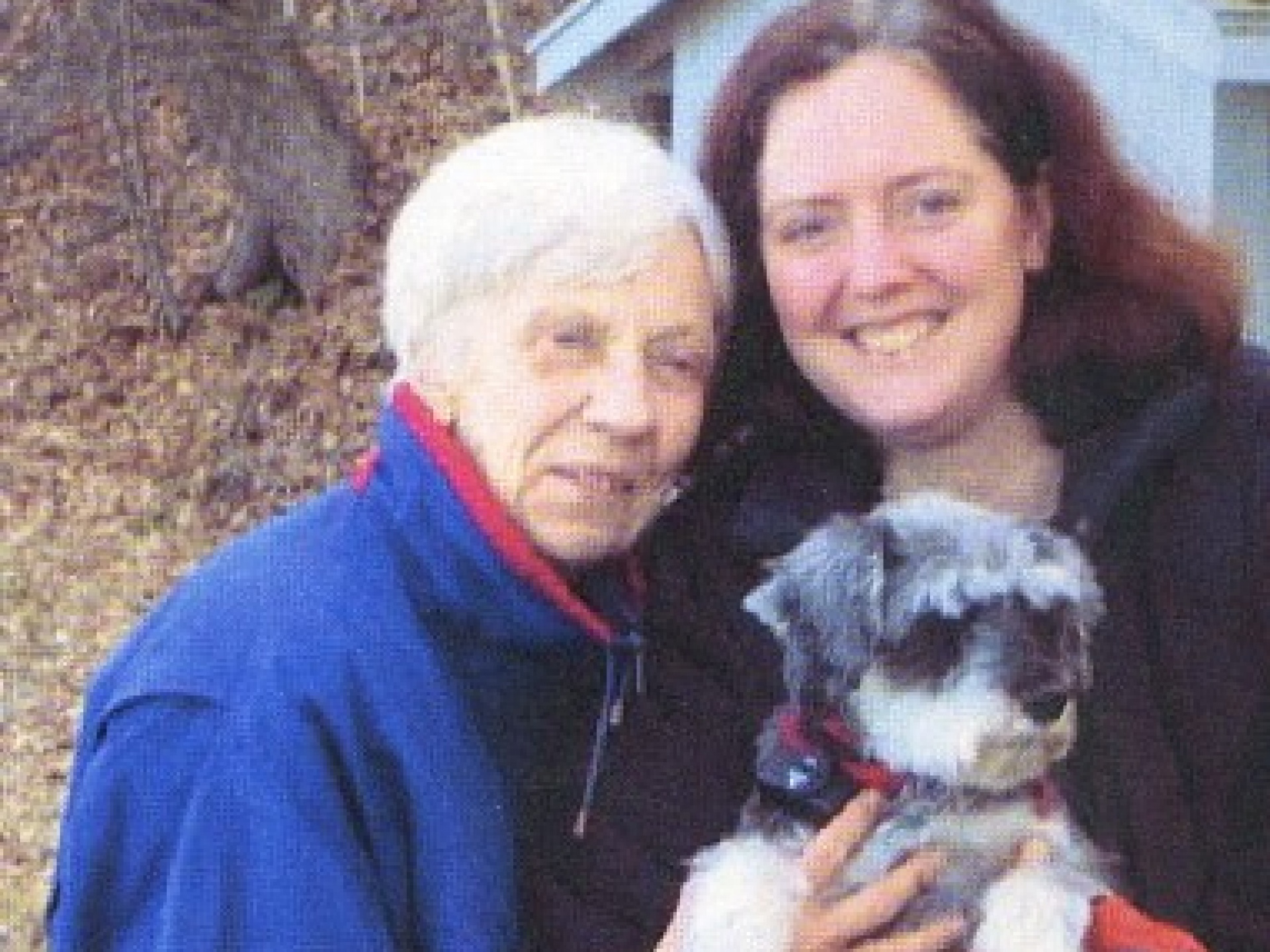Creating a “Life Celebration” for a Person with Dementia

Sign up and receive information on the latest news and updates.
Even with advanced dementia, my mother could feel moments of joy. I will always feel grateful that we gathered to celebrate her life not after she passed away, but while she was alive and could enjoy being the center of attention.
My mother, Judy, told me years ago that when she passed away she wanted me to cremate her and to hold a “life celebration,” not a funeral—a party with family and friends. She pictured us at her lakeside home, reminiscing and laughing. We would spread her ashes on the waves, then talk and eat.
As Mom’s dementia progressed, I remembered her wishes, and fully intended to follow them. But sadly, when she ran out of savings we had to sell the cottage to help pay for her memory care assisted living facility. What remained were my visits with her, a handful of friends who still visited, and the loving staff in her facilities. I decided that what was most important was not a life celebration after she passed away, but the quality of her life from day to day.
On the other hand, I still felt Mom deserved a party.
In 2010, when Mom had to move into a nursing home, I planned a small gathering for her 78th birthday. On the invitations, I wrote, “Though she’s living with advanced dementia, Mom will delight in your presence. Years ago she wanted a celebration of her life after she passed, but we’re sharing our love and affection for her now while she can enjoy it.” I suspected that by the following year Mom might be much less responsive (and mostly I was right). The time was ripe.
Few members of Mom’s family remained—her brother from out of state, and her young step-mother—but they came, and my husband and teenage children were there. Some of Mom’s favorite neighbors from the lake joined us, and two women who visited her every week came as well—the aide from the memory care facility I hired to visit Mom in the nursing home (they really enjoyed each other’s company), and the massage therapist I also hired to visit Mom weekly, a woman who often read to Mom and took her outside. (These women were “paid” friends, but to Mom they were special companions. Even when she couldn’t speak or remember their names, she seemed happy to see them.) I sent an invitation to the directors of the two assisted living facilities where Mom had lived, to invite any staff who might like to see Mom. The only staff member who came was a dining room worker from the first facility, a man who always seemed to enjoy my mother. He brought his wife, and it felt lovely to think that someone at Mom’s first assisted living facility remembered her fondly.
My husband and I cooked the meal. I baked Mom’s favorite angel food cake—the kind she used to make for my birthdays—and we invited all of the nursing home staff to join us. I displayed photos of my mother and her family, and the staff came down to eat the food and study the captions under the photographs. I don’t think the staff were invited to join family celebrations very often, and I think they enjoyed learning more about my mother as a person. Throughout the party, a harpist in the corner played “Clair de Lune” and other of my mother’s favorite pieces.
It was a small, serene party, and though she said little, Mom held people’s hands, smiled, and locked onto their eyes with hers. She listened closely and laughed right on cue. I’m not sure which guests she recognized and remembered, but that was okay.
I felt happy that the people who hadn’t seen Mom in years had a chance to feel her spirit once again, to see that she was still “in there” despite the dementia. Everyone seemed profoundly moved by her smile and her shining eyes.
When Mom finally passed away last year, a few days after Thanksgiving, my instinct was to honor her with another celebration of her life, or at least a service of some sort. It seemed wrong to not do so. I went ahead and reserved a church and started planning. As it became clear that the same people who would travel to a funeral were the same people who already came to the birthday “life celebration,” I cancelled the reservation. All of us—Mom, me, my family, our relatives, Mom’s friends, and her care partners—had already shared what Mom had envisioned. What remained was to say “good-bye”—and her party served that purpose for most of the guests.
For me and my husband and children, saying good-bye meant hiking down the steep, shale road to the lake to slip Mom’s ashes into the water by our old cottage. We said a few words, and I pictured Mom happy to be reunited at last with her beloved lake. But what I will always remember is not the feeling of mourning her death, but the look on her face at that party. Even with advanced dementia, it was clear that Mom could feel moments of joy. I will always feel grateful that she had the opportunity to enjoy this day of transcendence, to be the center of attention and to feel everyone’s love, when she was still with us.
Martha Stettinius is the author of the critically-acclaimed book "Inside the Dementia Epidemic: A Daughter's Memoir." Martha was a “sandwich generation” caregiver for her mother for 8 years. Her mom, Judy, who had vascular dementia and probable Alzheimer's disease, lived with Martha, then in assisted living, a rehab center, a "memory care" facility, and a nursing home. Martha is also the moderator of the USAgainstAlzheimer's Facebook Community Group, which has nearly 500 members. For more information about Martha, visit www.insidedementia.com.
This piece originally appeared on Caregivers.com
